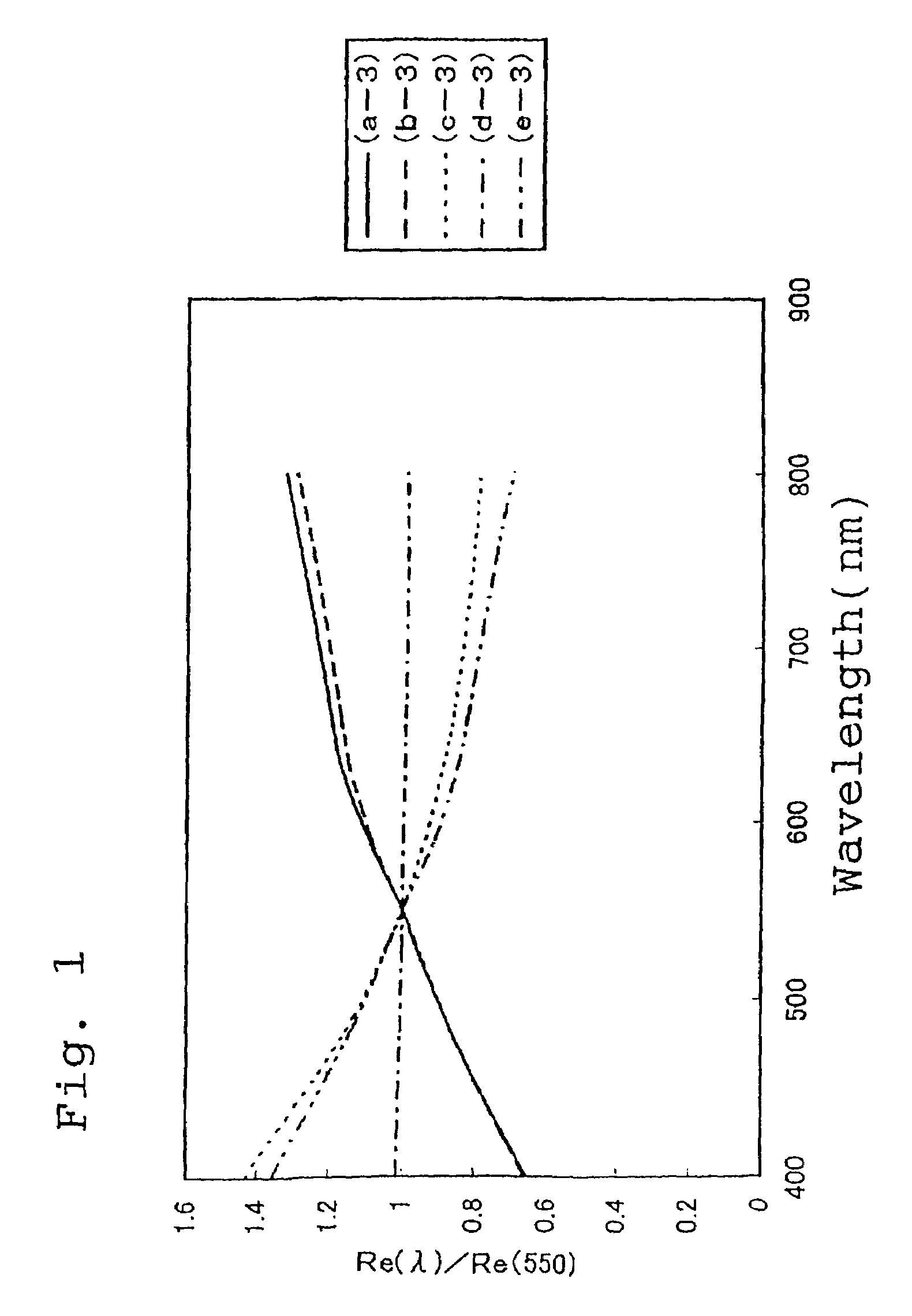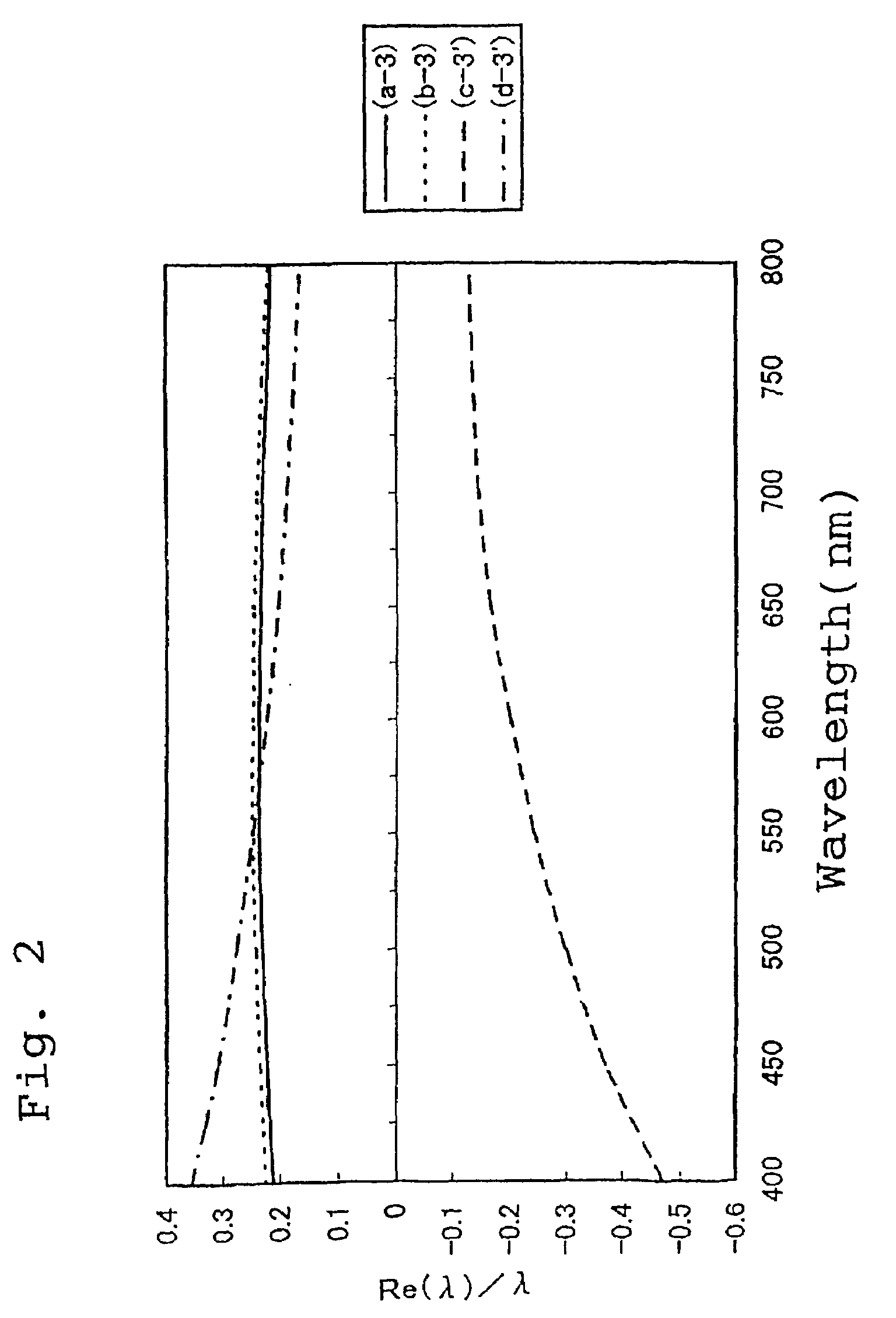Thermoplastic norbornene resin based optical film
a technology of optical film and thermoplastic norbornene, which is applied in the field of optical film, can solve the problems of film inferior adhesion to hard coat, film may suffer from retardation imparted to transmitted light, and film may suffer from anti-reflective film,
- Summary
- Abstract
- Description
- Claims
- Application Information
AI Technical Summary
Benefits of technology
Problems solved by technology
Method used
Image
Examples
synthetic example 1
[0313]100 parts of 8-methyl-8-methoxycarbonyltetracyclo[4.4.0.12,5.17,10]-3-dodecene (the specified monomer B), 150 parts of 5-(4-biphenylcarbonyloxy)bicyclo[2.2.1]hept-2-ene (the specified monomer A), 18 parts of 1-hexene (a molecular weight regulating agent) and 750 parts of toluene were combined in a reaction vessel under a nitrogen atmosphere, and the solution was then heated to 60° C. To this solution in the reaction vessel were then added 0.62 parts of a toluene solution of triethyl aluminum (1.5 mol / l) as a polymerization catalyst and 3.7 parts of a toluene solution (with a concentration of 0.05 mol / l) of tungsten hexachloride modified with t-butanol and methanol (t-butanol:methanol:tungsten=0.35 mol:0.3 mol:1 mol), and the system was subsequently stirred for 3 hours at 80° C. to enable the ring opening polymerization reaction to proceed, and yielded a solution of a ring opening polymer. The polymerization conversion rate in the polymerization reaction was 97%, and the intrin...
synthetic example 2
[0318]With the exception of using 100 parts of 8-methyl-8-methoxycarbonyltetracyclo[4.4.0.12,5.17,10]-3-dodecene (the specified monomer B) and 150 parts of 5-(2-naphthylcarbonyloxy)bicyclo[2.2.1]hept-2-ene (the specified monomer A), reaction was conducted in a similar manner to the synthetic example 1 and yielded a resin (b-1) with a hydrogenation ratio of the olefin-based resin unsaturated bonds of 99.9%, and essentially no hydrogenation of the aromatic rings derived from the specified monomer A. The value of Tg for the resin was 105° C. Measurement of the polystyrene equivalent number average molecular weight (Mn) and the weight average molecular weight (Mw) using GPC methods (solvent: tetrahydrofuran) revealed a number average molecular weight (Mn) of 33,000 and a weight average molecular weight (Mw) of 120,000, giving a molecular weight distribution (Mw / Mn) of 3.64. Furthermore, measurement of the saturated water absorption of the resin (b-1) at 23° C. yielded a value of 0.2%, a...
example 1
Comparative Example 1
[0322]The aforementioned resin (a-1) was dissolved in toluene to produce a concentration of 30% (the viscosity of the solution at room temperature was 30,000 mPa·s), and an INVEX lab coater manufactured by Inoue Metalworking Industry Co., Ltd. was then used to apply the solution to a PET film (Lumirror U94 manufactured by Toray Industries. Inc.) of thickness 100 μm which had been subjected to hydrophilic surface treatment with an acrylic acid-based resin system (to improve the adhesion), in sufficient quantity to produce a film, on drying, with a thickness of 100 μm. The film was then subjected to preliminary drying at 50° C., and then secondary drying at 90° C. The resin film was then peeled away from the PET film to yield a resin film (a-2). The residual solvent content of the thus obtained film was 0.5%.
[0323]The film was heated to a temperature of Tg±5° C., namely 115° C., in a tenter, and then stretched 2.5 fold at a stretching speed of 1000% / min. The stret...
PUM
| Property | Measurement | Unit |
|---|---|---|
| wavelength | aaaaa | aaaaa |
| wavelength | aaaaa | aaaaa |
| wavelength | aaaaa | aaaaa |
Abstract
Description
Claims
Application Information
 Login to View More
Login to View More - R&D
- Intellectual Property
- Life Sciences
- Materials
- Tech Scout
- Unparalleled Data Quality
- Higher Quality Content
- 60% Fewer Hallucinations
Browse by: Latest US Patents, China's latest patents, Technical Efficacy Thesaurus, Application Domain, Technology Topic, Popular Technical Reports.
© 2025 PatSnap. All rights reserved.Legal|Privacy policy|Modern Slavery Act Transparency Statement|Sitemap|About US| Contact US: help@patsnap.com



